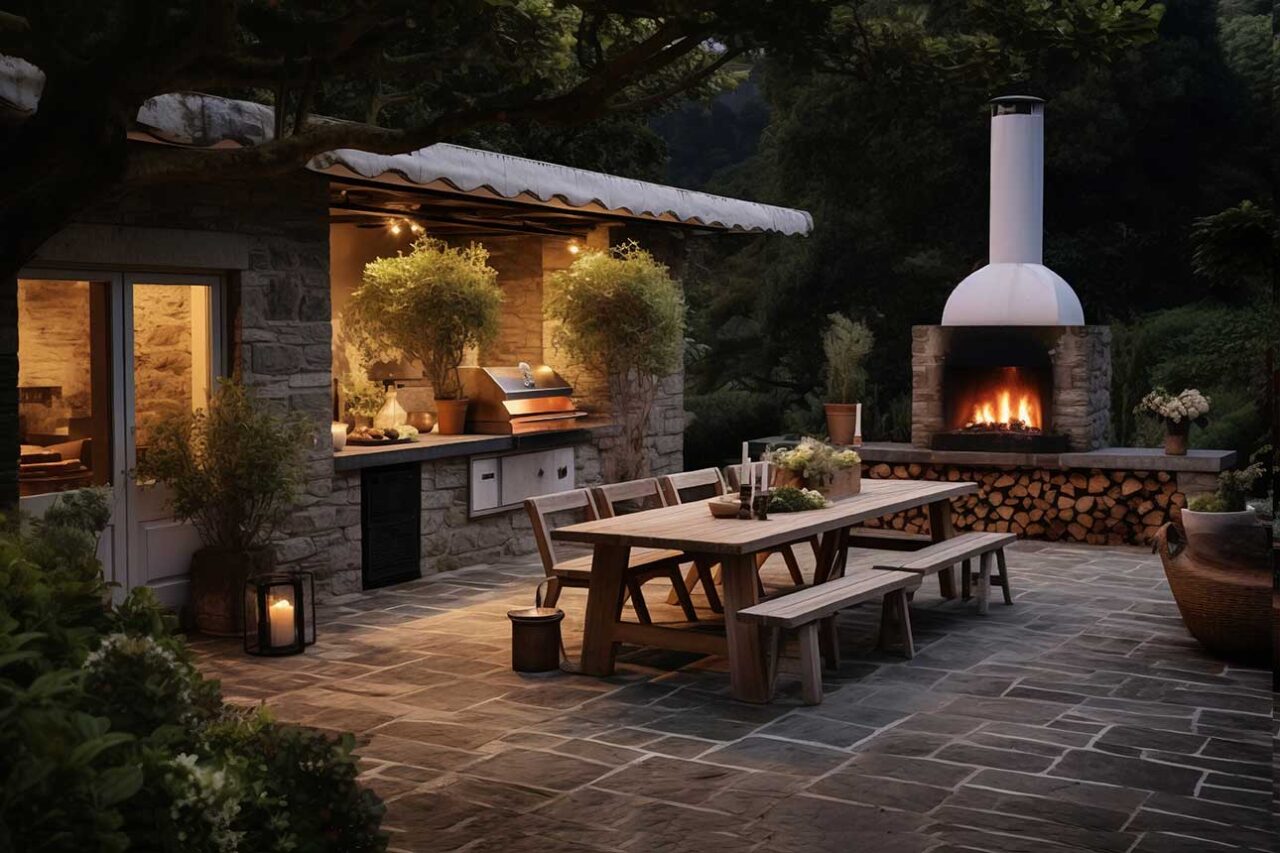The eternal debate in landscaping and home enhancement revolves around choosing between larger or lower pavers. Homeowners and landscaping professionals likewise ponder this decision, as it can significantly impact the outgrowth of a design. Pavers come in colorful sizes, from grand 12-inch places to more modest bricks, each with unique advantages and downsides. What criteria should you use to ascertain your design’s perfect paver size?
The Advantages of Lower Pavers
Lower pavers have several noteworthy advantages over their larger counterparts. Then are some compelling reasons to consider them for your design.
Ease of Installation: Lower pavers are lighter and more manageable, making them easier to install. They do not bear necessary backbreaking labour during installation, saving you time and work costs. Further straightforward relief lower pavers have a distinct advantage in conservation and repairs.
Replacing individual pavers in case of damage or wear and tear is straightforward. You will not need to struggle with lifting and manoeuvring large, heavy pieces.
Design Inflexibility: Lower pavers offer further design inflexibility. Their size allows for intricate and creative patterns, adding aesthetic charm to your out-of-door space. You can experiment with colorful shapes and sizes to achieve a unique look.
Cost-Effective Lower monuments are frequently more cost-effective as they bear lower material than larger bones. You can cover a quieter area with the same budget while achieving a charming result.
Reduced Base Material Lower: Pavers have a lower face area, reducing the base material needed before installation. This can lead to cost savings in the overall construction process.
Advanced cargo Capacity: Unexpectedly, lower monuments boast a larger cargo capacity due to their favorable strength-to-weight rate. This trait is pivotal for areas that need to support the weight of heavy cabinetwork or vehicles.
When to conclude for Larger Pavers
While lower pavers have their graces, there are scripts where larger pavers shine. Consider the following situations when larger pavers might be the right choice.
Covering Large Areas: If your design involves covering a substantial space snappily and effectively, larger pavers are your supporter. They bear smaller pieces to cover the same area, making the installation more effective.
Grand and Impressive Look: Larger pavers have a commanding presence. They can produce a dramatic and visually striking effect in any out-of-door space, adding an elegant and sophisticated touch.
Low conservation: Larger pavers fit the bill if you prefer a low-conservation option. Their size means smaller joints to maintain, and they generally bear more insufficient ongoing care than lower pavers.
Unevenly Distributed Areas: In cases where your design point is impeccably flat, larger pavers are a practical choice. They can be installed snappily and fluently in similar invariant conditions.
Low-Business Areas: Larger pavers are best suited for low-business areas. Their size and weight may not support heavy loads, making them ideal for spaces like entries or quadrangles.
Maintaining Your Pavers for Life
Once your pavers are in place, proper conservation is essential to ensure they remain in excellent condition for time. Then are some conservation tips to keep in mind.
Regular drawing: Clean your pavers regularly using a pressure washer to remove dirt, smut, and debris that may accumulate in the joints. This routine conservation will help keep your pavers looking fresh.
Sealing: Consider sealing your pavers after installation, especially if they’re exposed to water regularly, similar to those around a swimming pool or hot hogshead. Sealing protects the face from fading, staining, and weed growth in the joints.
Prompt Repairs: If you notice any cracks, chips, or signs of damage on your pavers, do not hesitate to replace them instantly. It seems that addressing these issues beforehand prevents further damage.
Professional Advice: Consult a professional when mistrustful about paver conservation or repairs. Experts like Aviara Pavers can give guidance and backing with all aspects of paver care, icing the life of your installation.
In Conclusion,
The decision between larger and lower pavers is nuanced, told by factors like design size, business, and design preferences. Generally, lower pavers offer further versatility and ease of installation, while larger pavers make a statement in grand settings. By understanding the unique advantages of each size, you can make an informed choice for your paving design, eventually leading to successful and aesthetically pleasing results.
Transform your home effortlessly with FloorPup! Discover our extensive range of hardwood flooring, receive tips from expert floor care and maintenance professionals. Our team includes professional floor fitters, skilled driveway pavers, and dependable carpet repair specialists, ensuring top-notch results. Learn more about our dedication to quality on our About Us page. Visit FloorPup and start enhancing your living space today!
Constantly Asked Questions
What Is the Stylish Size for Pavers?
The ideal paver size is a 6 x 12 x31/8- inch paver—this size balances between covering a domestic area effectively and fitting into lower spaces.
What Is the Most Durable Paver?
Clay or lawn-filled plastic pavers are among the most durable options. They’re robust, long-lasting, and bear minimum conservation. They come in colourful sizes, shapes, and colours, making them suitable for bright, out-of-door spaces.
Can You Install Pavers Yourself?
Yes, it’s possible to install pavers as a DIY design. Still, seeking professional guidance is a good idea before starting a significant installation. Professionals can ensure that the building is done correctly and safely.
What is the best type of paver?
The best type of paver is contingent on several factors, including your specific project requirements, design preferences, and budget. Concrete pavers are favoured for their durability and cost-effectiveness, while clay brick pavers offer a classic appearance. Natural stone pavers like granite or limestone provide a timeless and elegant aesthetic. Your ideal paver choice should align with your project’s unique demands and aesthetics.
What are the thickest pavers?
These thicker pavers are commonly used for heavy-duty applications like driveways and areas with significant traffic. If you’re looking for a thinner option, they are also available for lighter use and for achieving specific design preferences.
How strong are paver stones?
Paver stones are renowned for their exceptional strength and durability. They can handle the weight of vehicles, making them suitable for driveways, and are highly resilient in various weather conditions. When properly installed, paver stones can last decades without significant wear or deterioration, making them a robust choice for outdoor paving projects.
Are pavers stronger than concrete?
On the other hand, pavers offer flexibility and resistance to cracking, making them durable for outdoor uses like driveways and patios. The choice between the two depends on your specific project needs and requirements.


